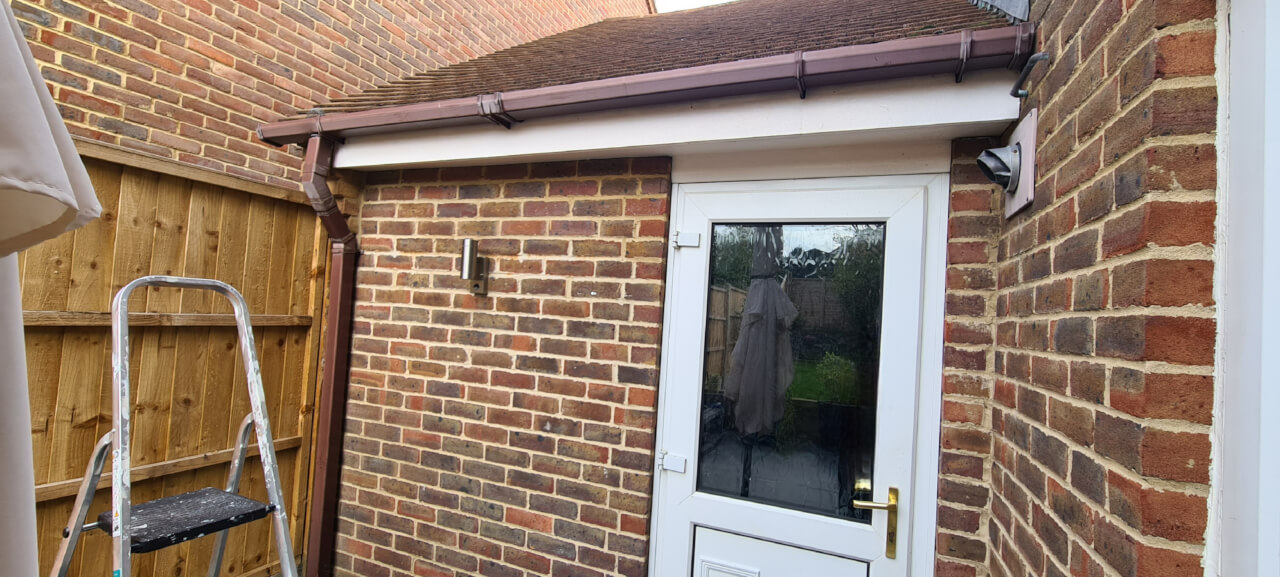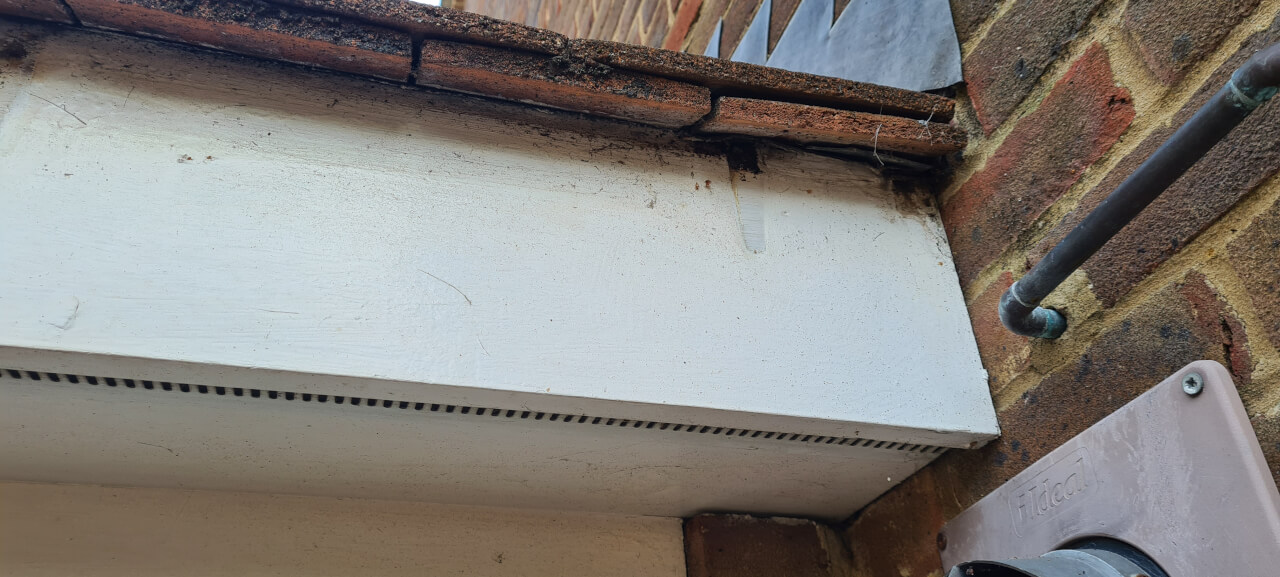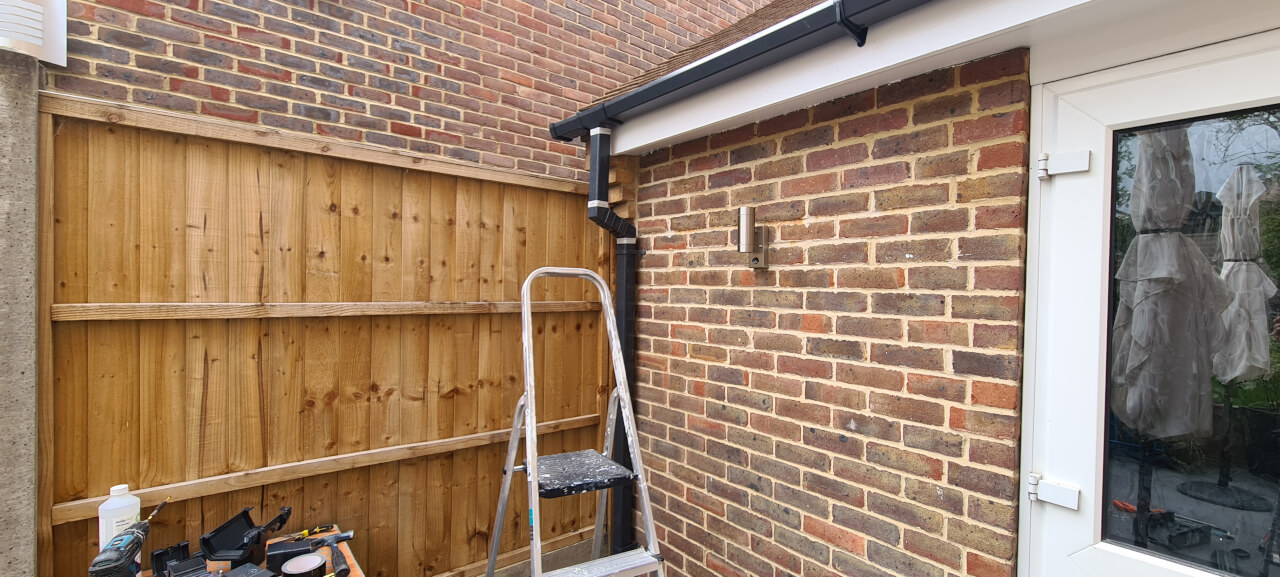Protecting property with vital gutter maintenance
Why do we have guttering?
Guttering plays a vital part in protecting the fabric and structure of any property and building. It has a major role in the capture and diversion of rainwater runoff away from the large surfaces of the building to normally underground pipes which transport the water to soakaways or drainage systems. Usually these drainage systems terminate in the flow being exited to sewage works, rivers or beaches.

If not maintained properly the failure of guttering and drainage systems can lead to the degradation of the materials that make up the construction of a property. Badly fitted or maintained guttering can lead to the decay of timber, stone, concrete and brick substances from the effects of being drenched or soaked for long periods of time in rainwater. This in turn can lead to rising damp with mould growing on the inside of the walls.

The guttering when fitted correctly and maintained properly without any leaks or blockages along its run will carry the water away with a gentle fall towards the downpipes. The guttering is fitted by brackets to fascia boards that are themselves attached to the eaves or rafters of the roof truss. Fitted to the underside of the roof eaves and at the bottom of the fascia boards are the soffit boards that are normally fashioned from thin sheet timber with some sort of vent hole system to allow air into the roof space. These air vents are important to keep the eves airiated and dry in damp and cold conditions.
Why does guttering fail?
The extreme weather conditions of very hot summers and cold wet winters means that guttering comes in for a harsh existence. Most guttering is made from unplasticized polyvinyl chloride know as uPVC for short. The “u” or unplasticsed bit is the quality that gives the plastic guttering its durability and long life. Even so eventually the ravages of the sun beating down and the freezing cold temperatures in the winter take their toll and the plastic becomes brittle. This is when joints start to leak and cracks appear in the guttering and downpipe themselves compromising its performance.

The image above displays guttering that has been in service of over 22 years and has started to fail. The plastic is cracked in places and the joints have started to leak. There is visual evidence of the weather beaten plastic which has lead to the decision to replace it.
Removing the old guttering

The first job was to undo the brackets that are fixed to the fascia boards and that are holding up the guttering under the roof tiles. Where the downpipe was attached to the gutter the bracket screws were hidden by the pipe which required that the clips holding the endpipe in place be undone before the screws could be removed. In undoing the clips they snapped because of the brittle nature of the plastic.

Once the guttering had been removed it was time to inspect the facias and soffits. This revealed evidence that there had been some wood rot below the roof tile in the right hand corner which had been caused by a crack in the gutter and the seal on the line end stop cap which had failed.
Repairing the fascia board
The rot was carved out of the fascia and taken back to good timber. The wood that was exposed was treated with wet rot wood hardener and allowed to dry for a few hours. Then it was filled with a high performance two pack wood filler including filling in the old bracket screw holes. The two pack filler dries very quickly and was ready for sanding after a couple of hours.

Once sanded the fascia and soffit were given a couple of coats of exterior weatherproof paint allowing for 16 hours between each coat as per the manufacturer’s instructions on the tin. The paint was quite thick and needed to be applied in small areas while making sure not to drag it off with extra brush strokes. Also care was taken not to block the vent slots in the soffit boards with too much paint.
Installing the new guttering
After the exterior paint had dried it was time to start fixing the brackets to the fascia to hold the new guttering in place. The brackets were mounted to allow the guttering to have a gentle fall down to towards the downpipe. The guttering was cut with an overlap to make the connection to the downpipe running outlet.

After making sure the running outlet was positioned on the fascia, facilitating a perpendicular exit into the 110mm drainage pipe, it was screwed into position. Then the next part of the downpipe was cut to the correct length to allow the square offset bends to carry the downpipe straight down the wall. The top downpipe was taped into position to keep it there while free hanging before the rest of the bends and pipe were cut ready for fixing.

The bottom down pipe is fixed into position with the square gutter pipe clip brackets and pushed into the rubber rainwater pipe adaptor. To make this job easier put some pipe grease around the botom of the downpipe or washing up liquid if there is no pipe grease to hand.

The last job was to cut the end gutter piece to length, affix the line end stop cap to it and connect it to the open end of the running outlet. This completed the repair and replacement job which should be good now for another five years with just periodic maintenance to clear debris for the gutter channels and downpipes.
